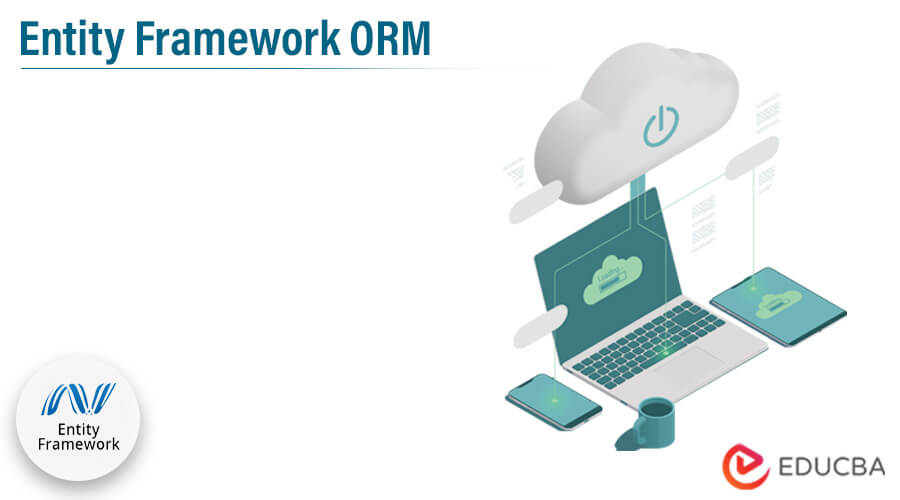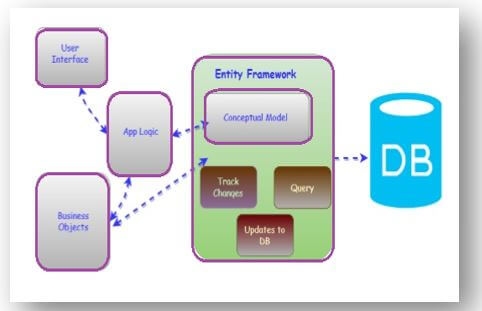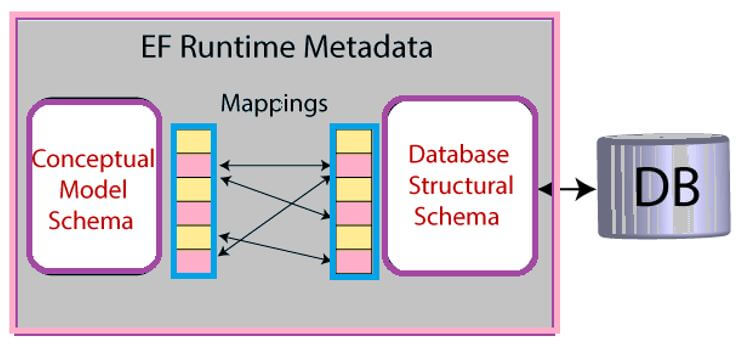Updated February 17, 2023

Introduction to Entity Framework ORM
Entity Framework ORM proposes the mechanism to the programmer for retrieving and storing the data in the database. The Entity Framework Object mapping enables the programmer to work on the relational database; it allows the developer to work on the data as properties and objects. Using the Entity Framework, the programmer uses the queries with the help of LINQ and retrieves and controls the data as strongly typed objects.
The EF ORM supports the implementation with services like identity resolution, query translation, tracking, and lazy loading; instead, the programmer focuses on the application’s business logic to data access fundamentals. Using the EF, the developer issues the query using the LINQ and retrieves and controls the data that are strongly-typed objects using C#.
Entity Framework Object-Relational-Mapper offers the provisions like query translation, identity resolution, change-tracking, and lazy loading. Hence, programmers/ developers concentrate on the application’s business logic rather than the data access fundamentals. The ADO.NET EF is targeted for building applications that support databases like MS SQL, MySQL, Oracle, DB2, etc. EF is an Open-Source and ORM Framework for the .NET Applications. It is a technique for .NET Developers to work on relational data, concentrating only on assured DB tables and the fields with real data where they are stored. In other words, Entity Framework entirely demolishes the requirement of writing the code of data accessing which the programmers are usually required to write.
What is ORM Actually?
The O/RM is abbreviated as Object/ Relational Mapping; in essence, an ORM is used to persevere the model objects in a relational database and retrieve them. For interfacing with the database, it uses metadata information. In this way, the Data-Layer code does not know about the structure of the database. The O/RM tool is the Middleware which entirely hides the complexity. Mapping is the heart of O/ RM, which is the procedure where it binds the relational worlds and the objects.
The Entity Framework is an ORM intended to enhance the developer’s efficiency by dropping the repeated task we used in the application. The EF generates the required database commands for writing and reading the data from the DB and performs the execution for us. At the same time, we are querying them, expressing the query against the domain of the object using the LINQ to Entities. EF executes the applicable query in the DB and visualizes the results into the occurrence of domain objects to work with the application. The ORM maps the type of domain openly to the database’s schema.
We can say how the properties and classes are associated in the database through mapping. The O/RM tools engine uses the above-associated tables in the database by the O/ RM tools engine, which dynamically assembles SQL code that gets the data and converts it into objects. Likewise, tracking the modifications to object properties; uses the mapping data to update back to the database. That information is expressed as an XML file. The ORM tools use the attributes of the classes and their properties to control the mapping data.
How to Use Entity Framework ORM?
The Entity Framework ORM is the ADO.NET Entity Framework Object Relational Mapping Framework, allowing the programmer to work on a relational database. It enables the programmer to work on the relational database and the developer to work on the data as properties and objects. Entity Framework is an Open-Source which is ORM Framework for the ADO.NET framework. ORM is used to build the database connections, execute the commands, take the query results, and organize the results for application objects.
Entity Framework has many mapping layers we can modify the mapping accords to our requirement.
Let’s see one example by mapping one entity to several database tables or many entities to one table.
EF is the data access technology for innovative applications in Microsoft. The ADO.Net links directly to the approach for data sets and data tables. Entity Framework over LINQ or ADO.NET to SQL for entirely new development.
Entity Framework ORM Working with the Data Model
Entity Framework progressed from the method called Entity-Relationship Modelling (ERM). It defines the schema of entities and their relations with each other. However, the entities are different; they are not similar objects. For example, the entities define the schema of tables in the database, except it describes the schema of business objects.
In the entity framework, there are three models they are:
1. Conceptual Model
In this Conceptual Model, only we describe the model classes. Therefore, this file splits into two essential sections; the first section is the container that lists the entire entities and the relationships maintained by the entity framework. The second container contains the data description of the structure.
2. Storage Model
This Storage Model is similar to the Conceptual Model but defines the database organization. It also uses the same XML nodes, similar to the previous one. In this model, the first section of the file lists the entire tables, stored procedures, tables, and foreign keys which are affected, and the second section defines the items listed in the first node. Regards the tables, views, columns, and primary keys are described. In the Stored Procedures, the input and output parameters are defined. The Foreign key description contains information about cardinality, the table that involves deleted information, and updated rules.
3. Mapping Model
In this Mapping Model, the file is entirely different. In this model, you can map the class to one or many tables and map a single table to one or multiple classes; it defines the inheritance mapping and maps the stored procedures for updating and object retrieval. In Mapping Model, there is a single node in the file it links the class to the table, and it is repeated more than once to ensure the class can be mapped to multiple tables and so on. Like the storage description file and dislike the conceptual file, the mapping file cannot be split into various files.
Conclusion
In this article, we have seen the Entity Framework ORM, a mapping technology to the relations with the database. It helps developers focus on the application’s business logic to data access fundamentals.
Recommended Articles
This is a guide to Entity Framework ORM. Here we discuss the introduction, working, and how to use the ORM entity framework. You may also have a look at the following articles to learn more –





